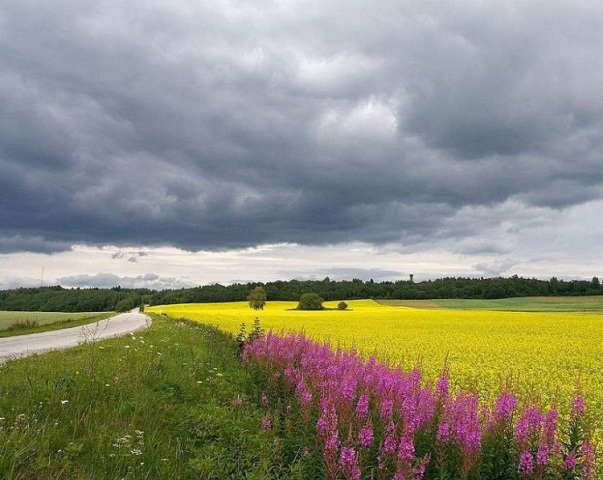Estonia is European country, situated in the Baltic region. To explore the country fully, check out the fun and interesting facts mentioned about it, in this article.
Facts About Estonia
Estonia is rarely ever mentioned or even spotted on the map of Europe. However, the small country is slowly picking up as a popular tourist destination in Europe, purely for its raw and untouched appeal. Estonia is a country situated in Northern Europe, in the Baltic region, and making up one of the members of the Baltic States (along with Latvia and Lithuania). It stands bordered by Finland in the north (across the Gulf of Finland), by Sweden in the west, by Latvia in the south and by the Russian Federation in the east. A democratic parliamentary republic, the country has been divided into fifteen counties. Estonia is the place where natural beauty blends perfectly with architectural splendor, to provide its visitors with numerous tourist attractions. Its sandy beaches, scenic lakes, magnificent cathedrals and medieval castles are enough to keep them busy throughout their stay. Read on to know more about the country.

Image: By Pimik, Edgar Sepp (Own work) [CC-BY-SA-3.0 (http://creativecommons.org/licenses/by-sa/3.0)], via Wikimedia Commons
Fast Facts
Continent: Europe
Area: 45,227 km2
Capital: Tallinn
Population: 1,340,194 (2010)
Currency: Euro
Official Languages: Estonian, Voro and Setu
Calling Code: +372
Type Of Government: Parliamentary republic
Fun & Interesting Facts about Estonia
- The official name of Estonia is the ‘Republic of Estonia’.
- Estonia is situated in the Baltic region of Northern Europe and spreads over an area of approximately 45,226 sq. km.
- The capital of Estonia is Tallinn; it is also the largest city in the country.
- The Estonian language is ranked as one of the toughest European languages to learn.
- Majority of the population in Estonia is Evangelical Lutheran, followed by Russian Orthodox and Eastern Orthodox.
- The official language of Estonia is Estonian, while Russian is also spoken widely.
- Estonia follows the system of ‘Parliamentary Republic’.
- Estonia is the smallest of all the Baltic States, being only slightly bigger than Switzerland or Denmark.
- The population of Estonia is larger than the population of Holland and Denmark.
- There is no dearth of palaces, cobbled roads and manor houses in Estonia.
- Tartu is the cultural capital of Estonia, while Parnu is its summer capital.
- Estonia gained independence from Soviet Union in the year 1991.
- Munamagi (Egg Mountain) is the highest point (elevation 318 m) in Estonia. It is also the highest point in the entire Baltic region.
- The first, public Christmas tree in Estonia was placed in the old town square in Tallinn, in the year 1441.
- Did you know that Estonians do not know what a traffic jam is? They have never had one in this small country!
- Estonia is home to over 1500 small islands.
- Each year, on 24th December, the President of Estonia, proclaims Christmas peace and takes part in a mass.
- Estonia is a member of the World Trade Organization and the European Union.
- Estonia has been named after ‘Ests’, the people who lived in the region in first century AD.
- The Republic of Estonia is one of three countries commonly known as the ‘Baltic States’, the other two being Latvia and Lithuania. However, there is as such no political unity between the states.
- Lake Peipsi, the largest lake in Estonia, is also the fourth largest and the biggest transboundary lake in Europe.
- Estonia has the highest number of meteorite craters per land area in the world.
- Estonia is one of the most sparsely populated countries in Europe.
- Finland is located only 80 kms from the country.
- Estonia converted to Christianity only in the thirteenth century.
- Contrary to popular belief, there are no polar bears in this country.
- Estonia is a part of the Schengen Area and therefore shares open borders with the rest of Europe.
- One of the popular delicacies of Estonia is grilled or marinated bear. Bear meat is legal in this country.
- Tartu, a popular student town in the country, is ranked as one of the most popular university towns around the world.
See also
More from iloveindia.com
- Home Remedies | Ayurveda | Vastu | Yoga | Feng Shui | Tattoos | Fitness | Garden | Nutrition | Parenting | Bikes | Cars | Baby Care | Indian Weddings | Festivals | Party ideas | Horoscope 2015 | Pets | Finance | Figures of Speech | Hotels in India : Delhi | Hyderabad | Chennai | Mumbai | Kolkata | Bangalore | Ahmedabad | Jaipur
- Contact Us Careers Disclaimer Privacy Policy Advertise With Us Lifestyle Sitemap Copyright iloveindia.com. All Rights Reserved.







